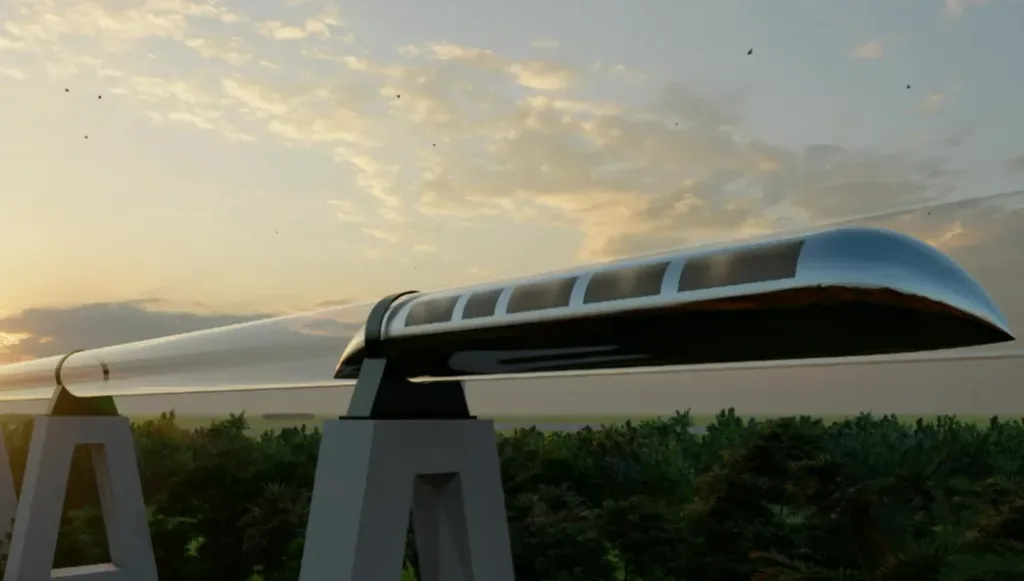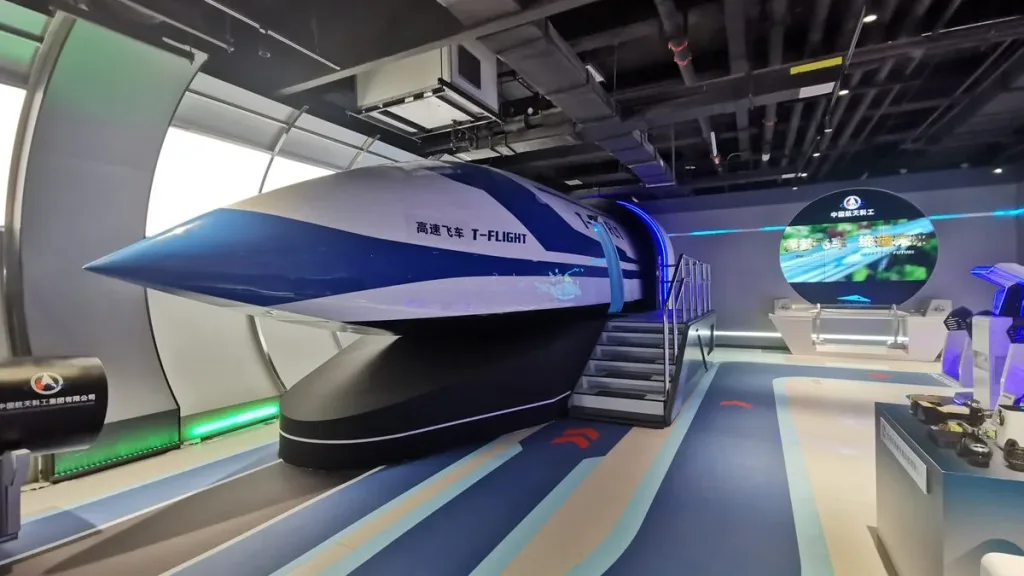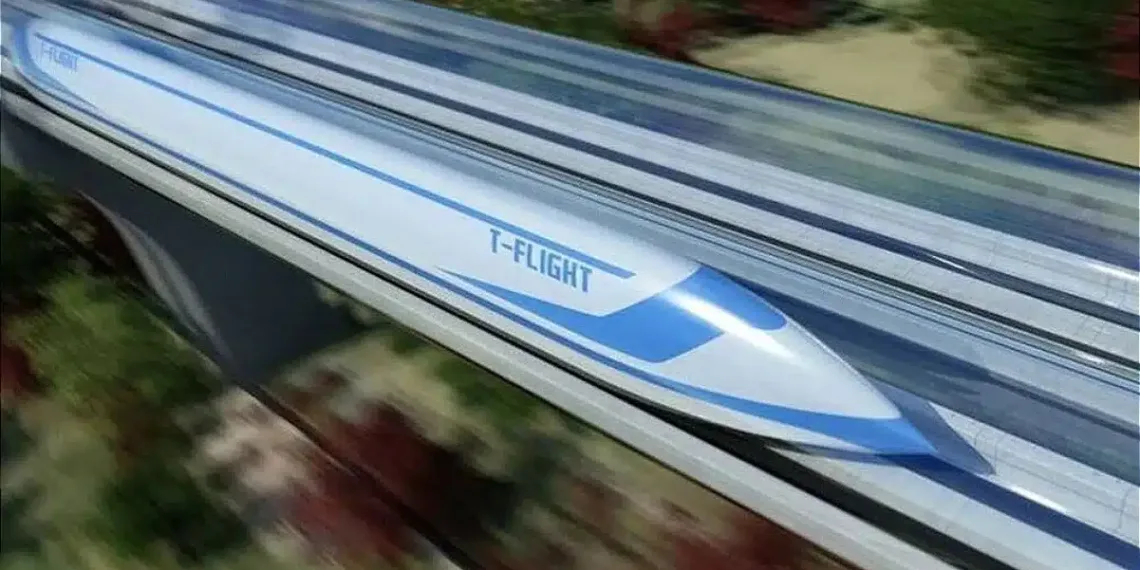China has achieved a groundbreaking milestone in transportation technology as its T-Flight vacuum-tube maglev train reached 623 km/h (387 mph), setting a new global speed record for superconducting maglev vehicles. This revolutionary achievement positions China at the forefront of high-speed rail innovation.

Table of Contents
Record-Breaking Performance Overview
| Specification | T-Flight Maglev |
|---|---|
| Top Speed Achieved | 623 km/h (387 mph) |
| Technology | Superconducting Magnetic Levitation |
| System Type | Vacuum-Tube Hyperloop |
| Developer | China Aerospace Science and Industry Corporation (CASIC) |
| Target Speed | 1,000+ km/h |
| Future Potential | Up to 2,000 km/h |
Revolutionary Technology Behind the Speed
The T-Flight utilizes magnetic levitation technology on a specialized test track, with engineers aiming to double the current speed to enable passenger transport faster than commercial aircraft. This achievement surpasses typical commercial jet flight speeds, which usually travel around 570 miles per hour.
The vacuum-tube system eliminates air resistance, allowing unprecedented speeds while maintaining ultra-quiet operation and zero direct emissions, making it an environmentally sustainable transportation solution.

Future Applications and Global Impact
China envisions connecting major cities like Wuhan and Beijing with this technology, potentially allowing speeds up to 2,000 km/h, making the maglev train faster than passenger jets. The current 600 km/h operational speed could slash Beijing-Shanghai travel time to just 2.5 hours.
This breakthrough significantly outpaces international competitors, with American Amtrak Acela reaching only 240 km/h and France’s TGV operating at 280 km/h.

The technology represents a paradigm shift in global transportation, combining speed, efficiency, and environmental sustainability. China’s continued investment in maglev infrastructure could revolutionize intercity travel and set new standards for public transportation worldwide.
For more transportation technology updates, visit our tech innovations section and explore future mobility trends.
FAQs
What speed did China’s maglev train achieve?
The T-Flight maglev train reached 623 km/h (387 mph), setting a new global record.
How does this compare to commercial aircraft speeds?
It exceeds typical commercial jet speeds of 570 mph, making it faster than many planes.








